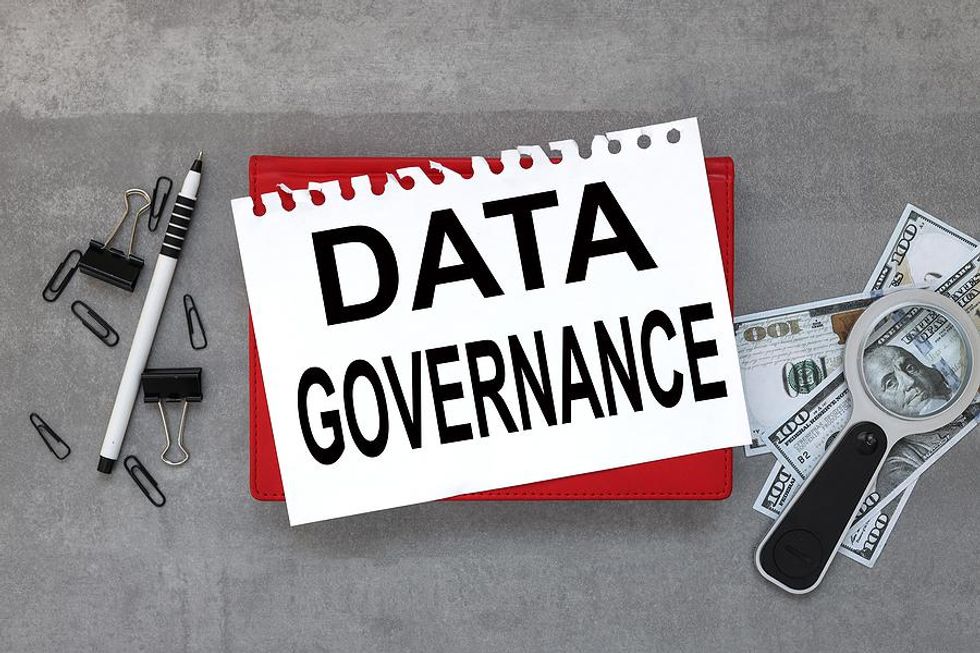
Part Three A: Standing up the Data Management and Governance Teams: Why CDOs Don't Have More Impact
As we previously discussed, the final step in our five steps to achieving data governance is to stand up the data management organization, including data governance.
- Data Strategy
- Stand up the Data Governance Committee (choose the sponsors early on)
- Data Management Framework (what, how, who)
- Business Case for Data Governance
- Stand-up Data Management/Governance Teams: Part 3a and Part 3b.
Pre-Cursor To Successful Adoption Of The Data Governance Office

Bigstock
As of this writing, I see many industry experts discussing how the chief data officer (CDO) role is struggling to gain traction in many organizations and how the CDO and often the analytics officer have yet to prove the value of the data analytics.
I believe some reasons for this are:
1. Strategic Perspective: Many organizations view data governance (DG) as primarily a tech function, not a hybrid or business-aligned one. While having DG report to tech leadership may work, these leaders must be well-versed in bridging gaps to other functions and are open to receiving organizational business input. If DG is part of tech, it can only be well represented across the organization if tech leaders see DG as a strategic enterprise necessity and an operational activity.
2. Skillsets: In many organizations, with DG and data residing in tech as a siloed vertical, I find the function cared for by only data architects and engineers. While these are essential functions, they cannot drive change, adoption, and business alignment alone. The customers of data governance (e.g., analytics, marketing, etc.) need to be heard by tech leaders with hybrid skills in DG technology and the business applications of data. These leaders with varied skills can drive out an integrated data and data governance strategy and framework.
[There may be other reasons—please let me know if there are other reasons.]
What I am about to say may ruffle some feathers, but of all organizational configurations, at least in financial services, and from observing what works and what doesn't, what works best for any DG program is when the analytics and data functions are under the same leader. This arrangement better aligns the business use of data through analytic insights.
I have seen centralized, hybrid, and decentralized functions. When analytics and business insights are closely connected to DG, there is a continuously reinforced learning loop. I will expand on this in another post. Still, when business needs and analytics teams drive and participate in data governance, change happens faster, and maturity and adoption rapidly increase. This also assumes a mature and well-governed analytics function with business alignment and linkage.
Data Governance is a hybrid function among the business, the data, and the technology teams. Said differently, data is the raw material with value added is transformed into information when you take information and combine it with a business need that becomes knowledge that has a business impact. Data governance and business lines all influence the components.
I've written about data management organizations (DMOs) and data governance organizations. What's the difference? I view data management as the day-to-day work of following the rules and policies set forth by governance by maintaining the data infrastructure. I believe the tight alignment of these functions is achieved if they are in the same team under one head of (HO), either the DMO or HO of data governance. Ideally, have data management (DM) and DG under one HO under the CDAO or have a HO of DG or DMO and HO of data management (a.k.a. HO data analytics platform) as direct reports to the CDAO.
There is a disturbing trend in some organizations to create ever smaller and smaller departments for data quality and governance that is separate from the DMO and the engineering teams that provide the plumbing and tooling to enable data governance. With such diffuse efforts, no wonder data governance teams and CDOs (in general) are not getting the traction they need. The impact is lessened by breaking the functional components down too finely, more handoffs are created, and additional cross-department efforts are required to align and implement all aspects of data governance.
Other industry commentators agree—this doesn't work well in either large or small organizations.
In my next post, I will offer my take on a data governance organization built for impact.
Readers: I'd like to hear your thoughts on this post. Let me know about your experiences with data management and data governance.
- Why Project Management Should Drive Your DEIB Strategy - Work It ... ›
- The Important Steps Toward Achieving Data Governance - Work It ... ›
- How To Get Management Feeling Safe With Data In The Cloud ... ›
- How To Organize Data Governance For Business Impact - Work It Daily ›
- How To Ensure The Data Mesh Doesn’t Create A Data Mess - Work It Daily ›

 Bigstock
Bigstock Bigstock
Bigstock Bigstock
Bigstock


